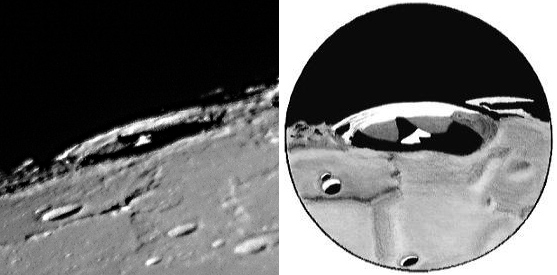Difference between revisions of "February 9, 2004"
| Line 50: | Line 50: | ||
<p align="center" class="main_titles"><b>Author & Editor:</b><br> | <p align="center" class="main_titles"><b>Author & Editor:</b><br> | ||
[mailto:tychocrater@yahoo.com Charles A. Wood]</p> | [mailto:tychocrater@yahoo.com Charles A. Wood]</p> | ||
| − | < | + | <!-- Cleanup of credits --> |
| − | + | <!-- Cleanup of credits --> | |
| − | < | + | <!-- Cleanup of credits --> |
| − | + | <!-- Cleanup of credits --> | |
| − | < | + | <!-- Cleanup of credits --> |
| − | + | <!-- Cleanup of credits --> | |
| + | <!-- Cleanup of credits --> | ||
</tr> | </tr> | ||
</table> | </table> | ||
| Line 62: | Line 63: | ||
===COMMENTS?=== | ===COMMENTS?=== | ||
Register, and click on the <b>Discussion</b> tab at the top of the page. | Register, and click on the <b>Discussion</b> tab at the top of the page. | ||
| + | <hr> | ||
| + | <!-- | ||
| + | You can support LPOD when you buy any book from Amazon thru [[Support_ LPOD|LPOD]]! | ||
| + | --> | ||
| + | <span style="font-size:88%"> | ||
| + | <center> | ||
| + | Contributions to http://www2.lpod.org/ are licensed under a Creative Commons Attribution No-Derivative-Works Non-Commercial 3.0 License. [http://www.creativecommons.org/licenses/by-nc-nd/3.0 http://www.wikispaces.com/i/creativecommons/by-nc-nd_3.0_80x15.png]<br> | ||
| + | </center> | ||
| + | </span> | ||
Revision as of 11:07, 1 February 2015
Seeing Double: Pythagoras
Photo and Drawing Credit: Carol Lakomiak |
|
Seeing Double: Pythagoras From Galileo in 1610 through the early 20th century, the only way to depict the lunar surface was by peering through a telescope and drawing what was seen. Lunar drawings were affected by each observer's telescope and eyepieces, seeing, visual acuity and artistic abilities. Naturally, variations in each of these, from night to night, or observer to observer, resulted in drawings that were generally similar, but different in details. As documented in the wonderful book Epic Moon these differences were almost always interpreted as real changes on the Moon. Relatively high resolution lunar images - starting with those taken with the Lick 36" refractor in the 1920s - finally provided evidence that allowed claims of changes to be tested, and so far, always rejected. Carol Lakomiak of Tomahawk, Wisconsin, is one of the few current observers who practices both the artistic and imaging traditions. Her drawing of the north polar region crater Pythagoras was made Sept 9, 2003 with an 8" Meade SCT at a magnification of 226. Carol used the same telescope with a Nikon CP4300 camera on Dec 23, 2003 to capture the image. Both the drawing and image show about the same lunar phase and are quite similar. But the drawing is stylized and lacks the details - especially for the surroundings beyond the crater - that are captured by the image. This doesn't mean the photo is better, but each is a useful depiction for some things. To search for changes over time the image is a better benchmark, but the drawing provides a much more realistic feeling for the observing experience. Related Links: Tomorrow's LPOD: Lunar Pyroclastics |
|
Author & Editor: |
COMMENTS?
Register, and click on the Discussion tab at the top of the page.
Contributions to http://www2.lpod.org/ are licensed under a Creative Commons Attribution No-Derivative-Works Non-Commercial 3.0 License. 




